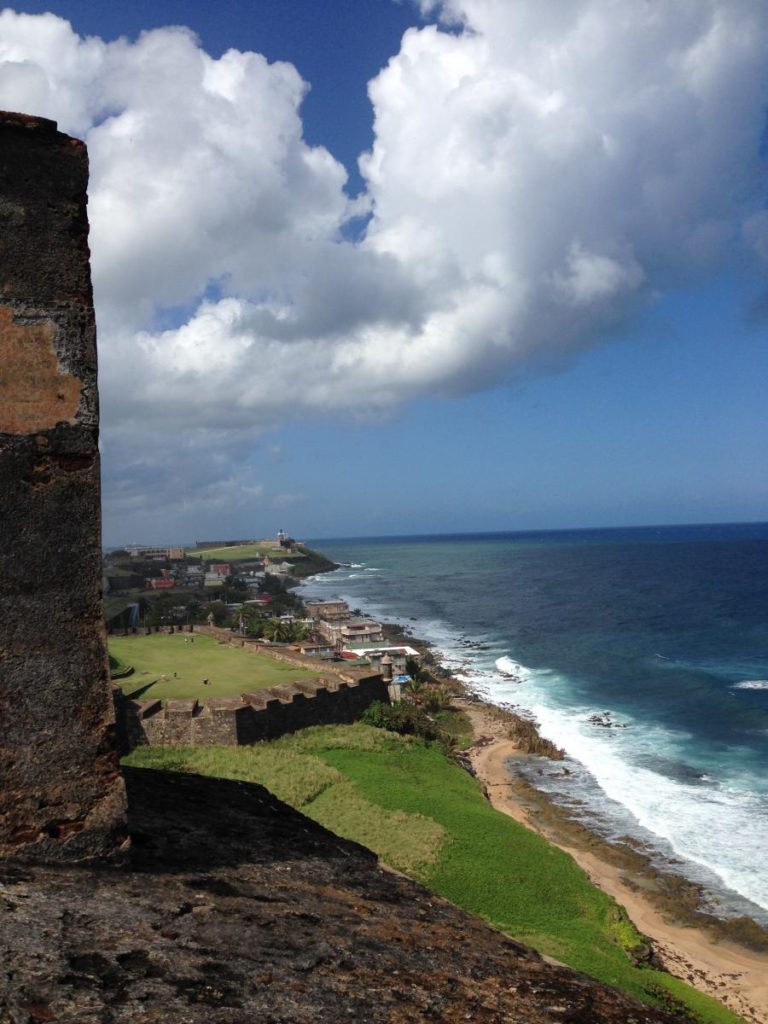My grandfather, Luis A. Ferré (1904-2003), was the third governor of Puerto Rico and the founder of the Pro-Statehood Party. When I was little, he used to say it is better to be a big fish in a little pond than a sardine in the big blue sea. It was a reminder of how good we had it on our little island, and a warning against leaving it in pursuit of a bigger and impossible dream.
All posts tagged: San Juan
Ask a Local: Ana Teresa Toro, San Juan, Puerto Rico

Your name: Ana Teresa Toro
Current city or town: San Juan, Puerto Rico
How long have you lived here: With the exception of two years in Spain, I’ve lived in Puerto Rico almost my whole life. I was born and raised in the center of the island, in a small town called Aibonito.
Three words to describe the climate: Tropical, Hot, Lush (You are going to be hit hard by humidity the moment you walk out of the airport, but then, you will feel the caress of the sun and the wind, and maybe of the rain as well. Also, we are obsessed with air conditioning, so you could go from sweating profusely to freezing in minutes). Also, as Gabriel García Márquez’s novel Cien años de soledad portrayed, in the Caribbean we are still obsessed with ice. Months after the hurricane —when it was really a necessity and we waited 6 or 8 hours in line to buy it— this is still a thing. Ice: the ultimate great thing.
Best time of year to visit? Christmas season (In the island it lasts 50 days and the weather is amazing, but besides that the whole country experiences a feeling of constant celebration during those festive days that start just after Thanksgiving and extend until mid-January when we celebrate Fiestas de la Calle San Sebastián, a popular festivity with a bit of the experience and feeling of a carnival. We also celebrate the Three Kings Day on January 6th, and share lots of “arroz con gandules”, “pasteles”, “lechón asado”, and our beloved “pitorro.” Most of it made by our mothers and grandmothers.)
The Common Statement

El Morro guards the northwestern tip of the old city, a headland with sparkling three-sixty views. Poised to fire cannons and guns against approaching sea invaders, the stone castle—six zigzagging levels, walls thick as hallways—was built by the Spanish starting in the early 1500s. El Morro protected Spain’s “porto rico,” the harbor crucial to any European empire seeking a foothold in the resource-rich Caribbean basin. But while El Morro protected San Juan from a seaside attack, the city’s eastern flank remained exposed to ambush by land, a weakness exploited by the British in 1598, then the Dutch in 1625. The Dutch succeeded in burning the city to the ground, but no one ever captured El Morro, whose now pleasant grassy lawn was, several times over, a bloody battlefield. After these near catastrophes, Spain began a second fort, Castillo San Cristóbal, at the city’s northeastern headland. Spain held Puerto Rico until the Spanish-American War, when the U.S. intervened in Cuba’s struggle for independence. During a few short, calamitous months in 1898, Spain lost to the U.S. its Pacific and Caribbean lands, including the Philippines, Puerto Rico, Guam, and, temporarily, a nominally independent Cuba. An empire of nearly four hundred years dissolved like cobwebs in rain.



